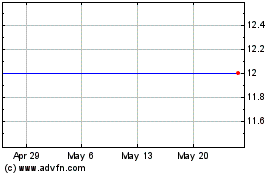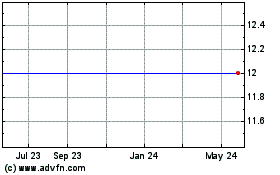Lexapro(R) as Effective as Paxil(R) and Well Tolerated in the Treatment of Generalized Anxiety Disorder
March 15 2004 - 4:33PM
PR Newswire (US)
Lexapro(R) as Effective as Paxil(R) and Well Tolerated in the
Treatment of Generalized Anxiety Disorder NEW YORK, March 15
/PRNewswire-FirstCall/ -- Forest Laboratories, Inc. announced today
the results of a six-month study, which found that Lexapro(R)
(escitalopram oxalate) is as effective as Paxil(R) (paroxetine
hydrochloride) in patients with generalized anxiety disorder (GAD).
When compared to Lexapro-treated patients, three times as many
Paxil-treated patients withdrew from the study due toadverse
events, and more than twice as many Paxil-treated patients
experienced weight gain. Both Lexapro and Paxil belong to the class
of antidepressants known as selective serotonin reuptake inhibitors
(SSRIs). The findings were presented at the 24th annual meeting of
the Anxiety Disorders Association of America (ADAA) in Miami.
(Logo: http://www.newscom.com/cgi-bin/prnh/20001011/FORESTLOGO )
"GAD is a chronic, debilitating disorder, and an SSRI is the
treatment of choice for long-term therapy,"said Robert Bielski,
M.D., lead study investigator and former professor of Psychiatry at
Michigan State University. "Lexapro was shown to be just as
effective as Paxil in treating GAD but with a lower discontinuation
rate due to adverse events." Anxiety disorders are the most common
mental illness in the United States, affecting more than 19 million
adults and costing approximately $42 billion a year. Four million
Americans, or 2.8 percent of the adult population in the U.S.,
experience GAD; the disorder affects twice as many women as men.
GAD is characterized by excessive anxiety and worry (apprehensive
expectations) about daily events or activities for a period of six
months or more. Other symptoms may include restlessness,
irritability, difficulty concentrating, muscle tension, and sleep
disturbance. Lexapro vs. Paxil in the Treatment of Generalized
Anxiety Disorder (GAD) Study Conclusions At the end of the
six-month study, both Lexapro and Paxil were associated with
improvement in anxiety symptoms. Mean changes in the Hamilton
Rating Scale for Anxiety [HAM-A] scores from baseline to endpoint
were -15.3 and -3.3, respectively. At endpoint, the overall mean
daily doses of Lexapro and Paxil were 14.4 mg and 29.9 mg,
respectively. Tolerability measures favored Lexapro over Paxil
during the study. Significantly fewer Lexapro-treated patients
withdrew from the study due to adverse events compared to patients
treated with Paxil (6.6% vs. 22.6%, respectively). Lexapro-treated
patients also had a lower incidence of clinically significant
weight increase (greater than or equal to 7 percent weight gain)
(18% vs. 8% for Lexapro). Of the adverse events reported by at
least 20 percent of patients in either treatment group, diarrhea
(8% vs. 21% for Lexapro) was the only adverse event reported more
frequently by Lexapro-treated patients. Adverse events that were
reported numerically more frequently by Paxil-treated than
Lexapro-treated patients included: sexual side effects,
specificallyejaculation disorder (30% vs. 15%), anorgasmia (female
orgasmic dysfunction) (26% vs. 6%), and decreased libido (23% vs.
5%), as well as insomnia (26% vs. 15%) and headache (21% vs. 12%),
respectively. Study Methodology One hundred twenty-three patients
(18-65 years) with GAD (HAM-A score greater than or equal to 18)
participated in the randomized, double-blind, flexible-dose study.
Following a one-week, single-blind, placebo lead-in period,
patients were randomized, in a 1:1 ratio, to receive either 10 mg
per day of Lexapro or 20 mg per day of Paxil. If clinically
indicated, the Lexapro dose could be increased to 20 mg after four
weeks of treatment, and the Paxil dose could be escalated in 10 mg
increments at bi-weekly intervals to a maximum dose of 50 mg per
day. The primary efficacy variable was the mean change from
baseline to week 24 in the HAM-A total score. About Lexapro Lexapro
is the newest and fastest-growing selective serotonin reuptake
inhibitor (SSRI) and has been prescribed for more than 4.5 million
patients in the U.S. Lexapro was approved by the U.S. Food and Drug
Administration (FDA) in August 2002 for both the initial and
maintenance treatment of major depressive disorder and in December
2003 for the treatment of generalized anxiety disorder. Lexapro is
available as tablets and oral solution. As with all SSRIs, Lexapro
should not be taken with monoamine oxidase inhibitors (MAOI). As
with other psychotropic drugs that interfere with serotonin
reuptake, patients should be cautioned regarding the risk of
bleeding associated with the concomitant use of Lexapro with
NSAIDs, aspirin, or other drugs that affect coagulation. Forest
Laboratories licenses Lexapro from H. Lundbeck A/S, the Danish
pharmaceutical firm that developed escitalopram and citalopram.
About Forest Laboratories and Its Products Forest Laboratories'
growing line of products includes: Lexapro(R), an SSRI
antidepressant indicated for the initial and maintenance treatment
of major depressive disorder and for generalized anxiety disorder;
Celexa(R), an antidepressant; Namenda(TM), an N-methyl-D-aspartate
(NMDA)-receptor antagonist indicated for the treatment of moderate
to severe Alzheimer's disease; Tiazac(R), a once-daily diltiazem,
indicated for the treatment of angina and hypertension;
Benicar(R)*, an angiotensin receptor blocker indicated for the
treatment of hypertension; Benicar HCT(TM), an angiotensin receptor
blocker and diuretic combination product indicated for the
second-line treatment of hypertension; and Aerobid(R), an inhaled
steroid indicated for the treatment of asthma. * Benicar(R) is a
registered trademark of Sankyo Pharma, Inc. Except for historical
information contained herein, this release contains
"forward-looking statements" within the meaning of the Private
Securities Litigation Reform Act of 1995. These statements are
subject to risks and uncertainties that affect our business,
including risk factors listed from time to time in the Company's
SEC reports, including the Company's Annual Report on Form 10-K for
the fiscal year ended March 31, 2003, and Quarterly Reports on Form
10-Q for the periods ending June 30, 2003, and September 30, 2003
and December 31, 2003. Actual results may differ materially from
those projected.
http://www.newscom.com/cgi-bin/prnh/20001011/FORESTLOGODATASOURCE:
Forest Laboratories, Inc. CONTACT: Charles E. Triano, Vice
President - Investor Relations of Forest Laboratories, Inc.,
+1-212-224-6714, Web site: http://www.frx.com/
Copyright
Forest Road Acquisition (NYSE:FRX)
Historical Stock Chart
From Jun 2024 to Jul 2024

Forest Road Acquisition (NYSE:FRX)
Historical Stock Chart
From Jul 2023 to Jul 2024
